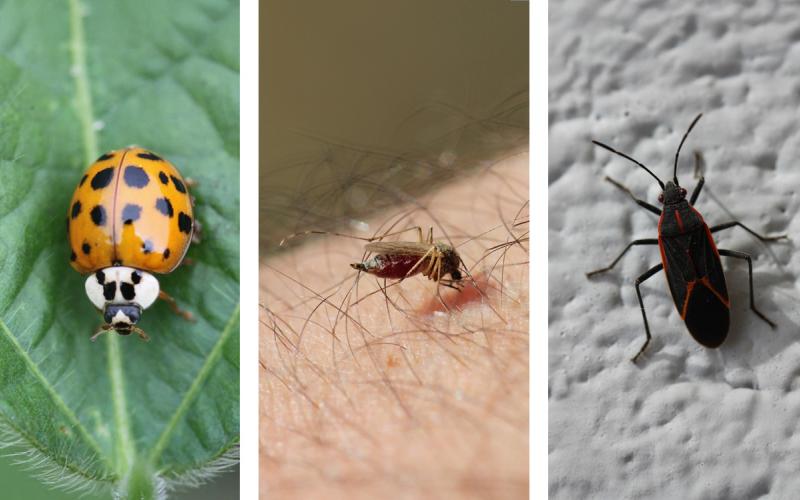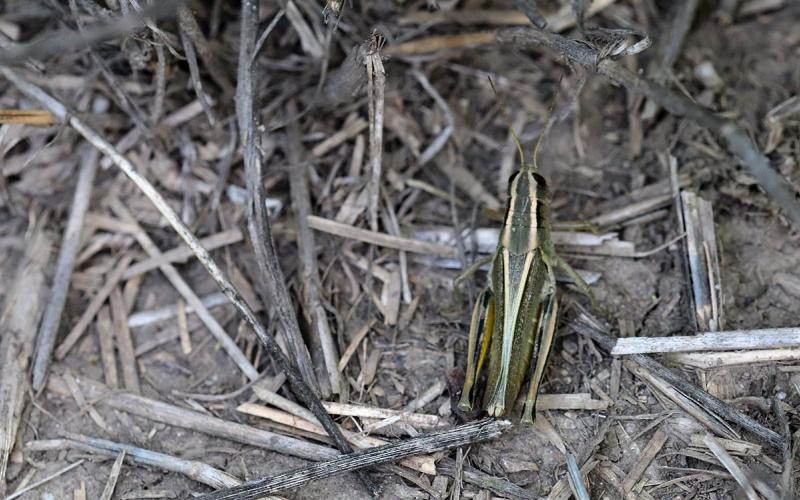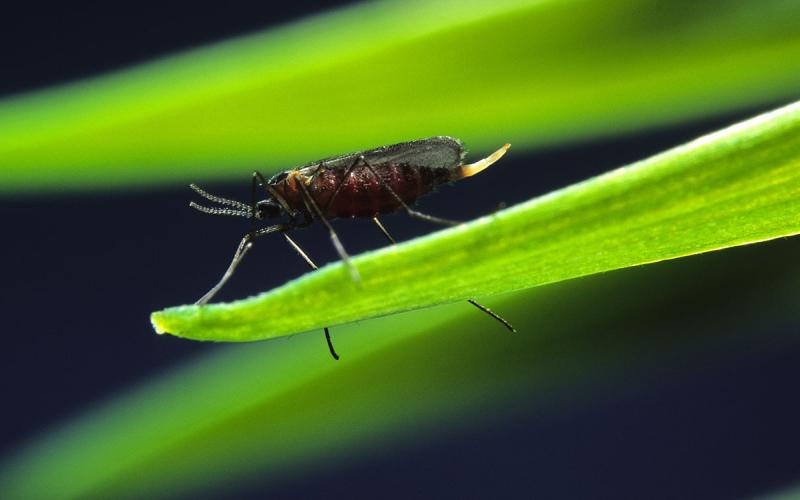Written with contributions by Shelby Pritchard, former SDSU Extension Pest Management Specialist.
Originally Submitted: April 21, 2022
Army cutworm caterpillar activity in winter wheat was detected a couple of weeks ago in South Dakota. While the colder temperatures that we experienced since then likely reduced their activity, forecasted warmer temperatures will make conditions favorable for army cutworms to start feeding again.
Lifecycle and Identification
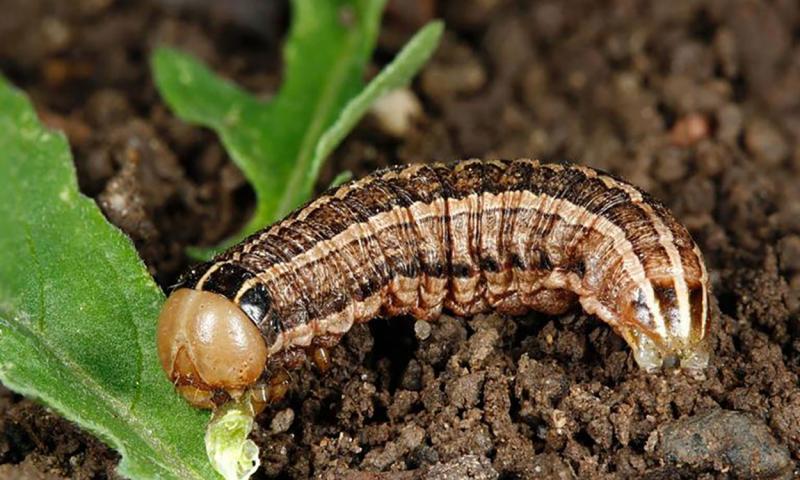
Army cutworm caterpillars overwinter in winter wheat and alfalfa fields. This is one of the reasons why army cutworms are often the first insect pest observed in winter wheat in the spring. Young caterpillars are small and are generally a light, green-brown color with relatively few markings. As the caterpillars mature, they develop a dull gray or gray-brown body that may have mottling (spots or smears of varying colors). Older caterpillars will have several pale stripes that run the length of their bodies. Regardless of age, the caterpillars have a light-brown head (Figure 1).
Army cutworm caterpillars feed at night and hide just below the soil surface during the day. During overcast days, the caterpillars may remain active. Army cutworms can become active during relative cool temperatures (around 40°F). The temperature that they are active may be lower in fields with limited ground cover but higher for fields with more ground cover.
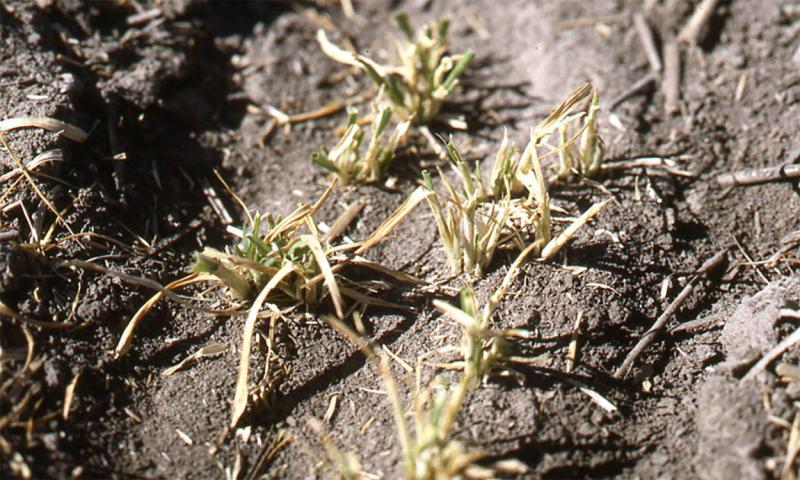
Scouting for the caterpillars can be time intensive due to sampling soil, thus management decisions based on detection and characteristic plant injury are recommended. The feeding is characterized as “clipping” where the caterpillars feed on the plant near the soil surface. This type of feeding can result in ragged patches of plants that appear to be cut or clipped (Figure 2). For winter wheat, the caterpillars tend to feed on the tender blades. Army cutworms generally do not feed on the stem, crown or meristematic tissues, which allows plant regrowth to occur.
In areas where caterpillars are abundant, they will move from food source to food source en masse or “army style.” Management is recommended if large patches of the field have been defoliated, or if 2 to 4 army cutworm caterpillars are observed per square foot.
Management
Injury to winter wheat from army cutworms will be worse for fields that are experiencing moisture stress. If management is necessary, an insecticide application is recommended. Please refer to the latest South Dakota Pest Management Guide - Wheat for a list of products labeled for cutworm management. Before applying insecticides for army cutworms, make sure that the forecasted temperatures are at or above 50°F for 3 to 4 days after application.
